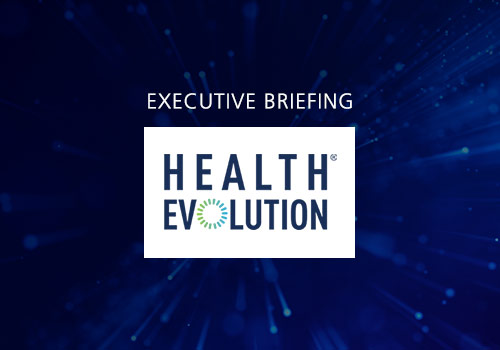Introduction
COVID-19 has upended the way consumers engage with the health care system. From virtual visits to in-home care, people are eager for their health care organizations to step up and meet them where they are. While this crisis is a once-in-a-generation challenge for the industry, it also presents an unparalleled opportunity for innovation.
Interest in telehealth and other virtual solutions has exploded overnight, and it’s estimated that as much as $250 billion of U.S. health care could be digitalized moving forward.1 This dramatic shift could result in an emergence of national telehealth and virtual care first organizations that are better equipped to succeed in the digital realm. Investment dollars for virtual health are flowing in at the same time that consumer data are being freed up through CMS regulations and the private sector.
This creates strong momentum to accelerate and enable the transition to alternative value-based delivery models — a transition that carries both risk and significant opportunity.
Health care leaders rose to the occasion during the onset of the COVID-19 crisis, showing a remarkable ability to adapt. But the impact of COVID-19 is ongoing. Consumers are still reluctant to venture into acute care settings for checkups and elective procedures. Chronic conditions have been left unattended and vaccination rates are dropping. There is a health imperative to find new ways to connect.
Health plans and providers feel the immediate need to reassure and reengage consumers. The demand for new digital and in-home self-help services is undeniable. Their need for mental, physical, social and financial health can no longer be set aside. Returning consumers to a resilient care system can happen only through a reconfiguration of delivery models that prioritizes value, accessibility, satisfaction and, most importantly, outcomes. Organizations can take advantage of the momentum to lead this redesign to meet patients and members where, when and how they need care.
Serving in one of the largest delivery systems in the U.S. with over 55,000 physicians and other clinicians, as well as sitting at the intersection of a myriad of health care stakeholders, provides a unique perspective. Engaging in value-based delivery in primary care, specialty care, hospital, post acute, home and mental and behavioral health affords a deep look at needs across the care continuum.
To address care delivery redesign, assess your organization and ask questions:
- How precisely do your delivery models mirror the needs and preferences of members and patients?
- How well do you employ a consumer-centric mindset as you make decisions about where to invest and where to divest?
- How can you leverage data to understand the holistic needs of consumers?
- How can emerging technologies and flexible staffing models help serve your most vulnerable populations with the most preventive approach?
- What will it take to design a more resilient, efficient and sustainable delivery?
By taking a strategic step back, organizations can stay relevant by building more agile, responsive and consumer-focused delivery models.
Solving for the human equation
The patient experience, a core tenet of the Quadruple Aim, has long been a topic of conversation. But COVID-19 and its resulting economic pressures have made it mandatory. Industry innovators are learning how to design services that consumers need, want and can afford. And they are finding the easiest, most convenient ways to deliver them. With their insight into the actual experience of health care, clinical leaders can help their organizations refocus delivery channels around the human element — and that includes the clinicians.
Reimagining the care journey
The process of reconfiguring delivery models can begin by taking a holistic look at the consumer experience and then applying the learnings gleaned from the recent upheaval. Where and why are consumers withdrawing? When and how do they prefer to connect? What new proactive ways can information now be collected and shared across teams? How can this improve outcomes?
The traditional approach centered on individual patients as they were sitting in-person with their provider. But relying on consumers to physically walk in the door before assessing their condition delays the preventive measures that ensure better health. Utilization rates dropped by over 50% during the COVID-19 crisis.2 Colonoscopies dropped 90% at the height of the pandemic, while mammograms fell 77% and childhood vaccinations fell 60%.3 The need for comprehensive population health management has never been more apparent. Building connections around the consumer, regardless of their location, can help create a more holistic picture and have greater impact on their health.
How can organizations reorganize delivery models to identify the people who need care the most? How can consumers be methodically engaged and connected to the right care? Freer access to data between health plans, providers and patients can be used to identify problems and engage more effectively with consumers.
Meeting the consumer where they are
The usage of telehealth, virtual channels and in-home care solutions has already skyrocketed. In April, nearly half of Medicare primary care visits were provided through telehealth compared with less than 1% in February.4 There are also indications that consumers have increasing comfort with utilizing telehealth, suggesting this is a change that may last, with 88% of new telehealth users saying they would use it again.5 The perceived barriers to utilizing these on-demand channels have dropped away, and innovators are already testing their potential in mental and behavioral health, pharma, dermatology, seasonal conditions and everyday care.
Health plans and providers can ask consumers what they feel is the best use of telehealth and in-home solutions. Clinicians can discover how these tools integrate care more naturally into the life of the person and therefore make adherence to care recommendations simpler and more likely. We should be able to meet the physical, mental and social health needs of all people in their home, whenever and however they choose.
Most traditional delivery models put pressure on the time, energy and dollars of the consumer, at a moment when they are already stressed or ill. These models waited until the consumer was sick before connecting with them, made them leave their home when they were unwell, and required that they manage communication between the clinic, hospital and pharmacy or suffer the consequences.
A modern delivery model should be friction-free for the consumer — allowing in-person visits when they’re needed but supporting healthy habits and disease prevention as the primary objective.
For example, emergency department visits declined 42% during the early stages of COVID-19,6 but much of ED utilization is for care reasons that could be addressed through other solutions. This is another opportunity to consider new tools and services that can tend to non-emergencies in a more productive, efficient way.
Factoring in social determinants of health
For health organizations, it’s equally important to consider the factors affecting the consumer outside of the hospital walls. It has been estimated that 80% of health outcomes are dictated by social determinants of health,7 including employment status, education, housing, transportation, dietary habits and more. COVID-19 has only exacerbated many of these issues.8
Bring these factors into the conversation by asking: How do we create a broader health ecosystem centered around the consumer? If they have needs of transportation or social connections, how can that be a part of the delivery channel? How can behavioral health needs be addressed? And how could these solutions be deployed at scale?
Measuring success
After consumer-centric strategies and delivery models have been implemented, leaders can help their organizations track efficacy and verify their success. There are several methods for accomplishing this — both traditional and nontraditional.
- Health plans and providers can measure the effectiveness and quality of delivery through the adoption rate of new services. Are you moving health outcomes at a population level?
- Organizations also need a set of experience metrics for consumers like net promoter score and customer effort score. Are you able to see improvements in consumer experience and behavior over time?
- Success can still be determined by measuring the total cost of care and factors underneath it, such as utilization and payment rates.
- Provider satisfaction rates can also tell the story of consumer satisfaction. If you set up a system where the patients and the clinicians caring for those patients are satisfied, you are more likely to see a high-performing system with less burden on physicians and improved outcomes for the consumer.
Tapping into the power of data and innovation
COVID-19 has given health plans and providers the opportunity to not only reimagine health care, but to reinvent it.
The sudden shift toward digital delivery plus the freeing up of consumer data provide a fresh slate for health care organizations to get better at understanding the current clinical condition of patient populations.
Data can be used to help reach at-risk populations and tailor delivery models to their needs. For instance, an organization could use data to risk-stratify their patient populations to identify those who are at highest risk of getting COVID-19 or other severe diseases. They could also leverage this data to create targeted communication campaigns with those patients to rebuild trust in their health organizations and help them understand how they could best protect themselves.
The integration of AI can also promote the delivery of more personalized, targeted care for consumers who are more apt to own and manage their own care. And it can relieve clinicians of administrative burden. Delivery is also being reshaped by the introduction of new technologies that allow for more diagnostic capabilities to be delivered outside of a clinical setting — for example, home tests that can be administered through the use of smartphone apps or online behavioral counseling. It’s important for health plans to be more flexible in how they design delivery and benefit structures to reach the widest possible segments of their population.
Building a more resilient delivery model
Two final components of reconfiguring delivery models is the building-in of resilience and the measuring of success. How can health organizations make investments and measure outcomes on both short-term and long-term horizons? Clinical leaders can play a crucial role in helping their organizations view their populations and their own staff on this trajectory, creating a more nimble and sustainable ecosystem.
Moving forward, resilient delivery models must include elements like personalized care programs, flexible staffing models and continual outreach and engagement.
Meeting the challenge of reconfigured delivery
COVID-19 has dramatically accelerated change in health care. From new competition to digital innovation, the industry — and the demands of its consumers — may never be the same. While this is a monumental challenge, it also presents an opportunity to reconfigure delivery models. I have worked to improve our health system, leading in the public sector as director of the Center for Medicare and Medicaid Innovation, in the private sector now as CEO of Care Solutions at Optum, and as a practicing physician. The challenges have been similar — how to design and implement a value-based system that achieves better health outcomes, lower costs and exceptional experience. Through collective efforts, the health system can adopt a more consumer-centric mindset, develop innovative care and services, and ultimately create more a resilient delivery model that improves the health outcomes for all.
About the authors:
Patrick H. Conway, MD
CEO of Care Solutions, Optum
References
- Bestsennyy O, Gilbert G, Harris A, Rost J. Telehealth: A quarter-trillion-dollar post-COVID-19 reality? Our Insights page. McKinsey & Company website. mckinsey.com/industries/healthcare-systems-and-services/our-insights/telehealth-a-quarter-trillion-dollar-post-covid-19-reality#. Accessed September 14, 2020.
- Modern Healthcare. COVID-19 reshapes healthcare utilization. News page. Modern Healthcare website. modernhealthcare.com/operations/covid-19-reshapes-healthcare-utilization. Accessed September 14, 2020.
- Martin K, Kurowski D, Given P, Kennedy K, Clayton E. The impact of COVID-19 on the use of preventive health care. HCCI Originals page. Health Care Cost Institute website. healthcostinstitute.org/hcci-research/the-impact-of-covid-19-on-the-use-of-preventive-health-care. Accessed September 14, 2020.
- U.S. Department of Health and Human Services. HHS issues new report highlighting dramatic trends in Medicare beneficiary telehealth utilization amid COVID-19. News page. U.S. Department of Health and Human Services website. hhs.gov/about/news/2020/07/28/hhs-issues-new-report-highlighting-dramatic-trends-in-medicare-beneficiary-telehealth-utilization-amid-covid-19.html. Accessed September 14, 2020.
- PwC. The COVID-19 pandemic is influencing consumer health behavior. Are the changes here to stay? Research and Insights page. PwC website. pwc.com/us/en/library/covid-19/covid-19-consumer-behavior.html. Accessed September 14, 2020.
- Hartnett KP, Kite-Powell A, DeVies J, Coletta MA, Boehmer TK, Adjemian J, Gundlapalli AV. Impact of the COVID-19 pandemic on emergency department visits — United States, January 1, 2019–May 30, 2020. Morbidity and Mortality Weekly Report page. Centers for Disease Control and Prevention website. cdc.gov/mmwr/volumes/69/wr/mm6923e1.htm. Accessed September 14, 2020.
- Aroditis A. Leveraging social determinants of health data to improve accountable care delivery and gain a complete picture of patients’ needs. Resource Center page. HIMSS website. himss.org/resources-leveraging-social-determinants-health-data-improve-accountable-care-delivery-and-gain. Accessed September 14, 2020.
- Abrams EM, Szefler SJ. COVID-19 and the impact of social determinants of health. The Lancet Respiratory Medicine. 2020;8(7):659–661. thelancet.com/journals/lanres/article/PIIS2213-2600(20)30234-4/fulltext. Accessed September 14, 2020.
Tag: White papers, briefs, e-books




